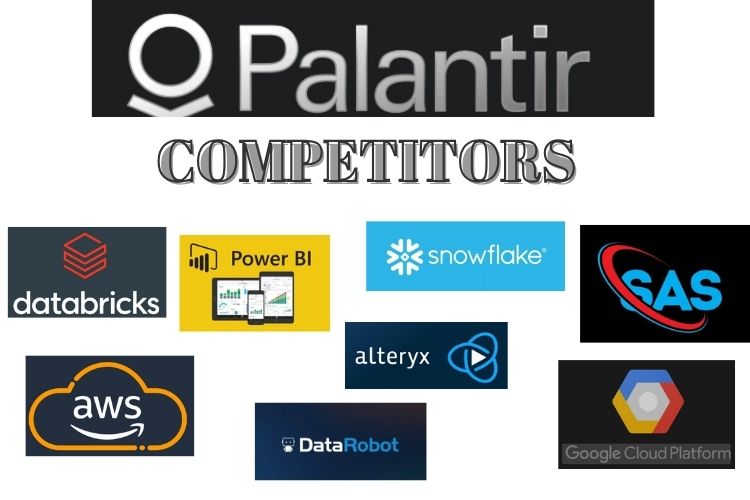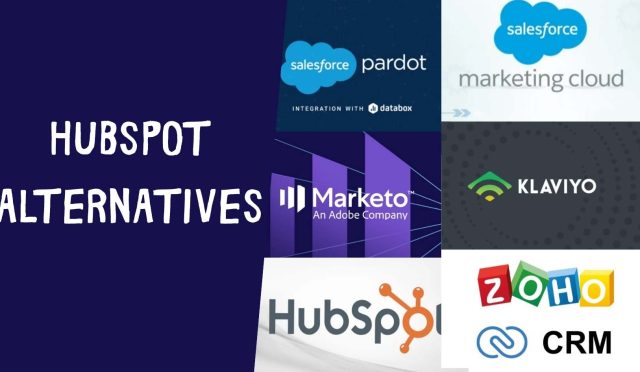Introduction
In this article, we will adequately inform you about Palantir competitors and how they compare in terms of providing data-driven solutions for various industries.

Palantir Technologies Inc. is a leading data analytics and software company known for its two main platforms: Palantir Gotham and Palantir Foundry. Gotham primarily serves government and intelligence agencies, while Foundry caters to commercial customers across various industries. Both platforms empower organizations to integrate, analyze, and visualize large datasets, facilitating informed decision-making and operational efficiency. However, Palantir faces competition from a diverse range of companies offering alternative solutions and specialized capabilities. Understanding the strengths and weaknesses of these competitors is crucial for businesses seeking data-driven solutions and for investors evaluating market dynamics.
Overview of the Palantir Competitors
In this table, you can find the strengths, weaknesses and core competency of Palantir competitors in the competitive environment.
| Feature | Founded | Core Competency | Strengths | Weaknesses | Key Differentiator |
|---|---|---|---|---|---|
| Palantir | 2003 | Data integration and analytics | Robust data integration, strong relationships with government | High costs, complex implementation | Comprehensive data integration and visualization |
| Databricks | 2013 | Unified data analytics and AI | Powerful data engineering, strong cloud integration | Complexity for less technical users | Suite of tools for data engineering and AI |
| DataRobot | 2012 | Automated machine learning | User-friendly, rapid model deployment | Heavy reliance on automation | Democratizing AI and machine learning |
| Alteryx | 1997 | Data preparation and analytics automation | Intuitive interface, data blending capabilities | Limited advanced analytics capabilities | Ease of use and rapid prototyping |
| Snowflake | 2012 | Cloud-based data warehousing and data lake | Scalability, performance, flexibility | Can be expensive for large deployments | Powerful cloud data warehousing |
| SAS | 1976 | Advanced analytics and business intelligence | Strong statistical capabilities, industry expertise | Legacy software, complex licensing | Proven track record |
| Tableau | 2003 | Data visualization and business intelligence | User-friendly, powerful visualizations | Limited data preparation capabilities | Interactive visualizations |
| Microsoft Power BI | 2013 | Business analytics and data visualization | Microsoft ecosystem integration, strong data modeling | Complexity for beginners | Comprehensive business intelligence platform |
| Google Cloud Platform (GCP) | 2008 | Cloud-based data analytics and machine learning | Scalability, cost-effectiveness, integration with Google | Complexity for unfamiliar users | Strong AI and machine learning capabilities |
| Amazon Web Services (AWS) | 2006 | Cloud-based data analytics and machine learning | Wide range of data services, strong ecosystem integration | Complexity for beginners | Extensive data analytics services and tools |
Market Share (Approximate) of the Palantir Competitors
In this section, we present the positions of Palantir competitors in the market.
- Palantir: Strong presence in government and intelligence sectors; expanding in commercial industries.
- Databricks: Leading platform for unified data analytics and AI, significant market share across various sectors.
- DataRobot: Major player in automated machine learning (AutoML), growing share in enterprise AI.
- Alteryx: Established platform for data preparation and analytics automation, strong industry presence.
- Snowflake: Leading cloud data platform focused on data warehousing and data lakes.
- SAS: Legacy player in advanced analytics and business intelligence, retains significant market share in select industries.
- Tableau: Strong position in data visualization and business intelligence.
- Microsoft Power BI: Significant market share in business analytics and data visualization.
- Google Cloud Platform (GCP): Growing presence in cloud-based data analytics and machine learning.
- Amazon Web Services (AWS): Extensive market share in cloud-based data analytics and machine learning.
Product/Service Ranges of the Palantir Competitors
In this section, we present the product/service ranges of Palantir competitors.
- Palantir: Palantir Gotham, Palantir Foundry.
- Databricks: Databricks Lakehouse Platform, Delta Lake, Machine Learning Runtime.
- DataRobot: DataRobot AI Cloud Platform (AutoML, MLOps), predictive analytics.
- Alteryx: Alteryx Designer, Alteryx Server, Alteryx Intelligence Suite.
- Snowflake: Snowflake Data Cloud (data warehousing, data lake).
- SAS: SAS Viya, SAS Analytics Pro, SAS Visual Analytics.
- Tableau: Tableau Desktop, Tableau Server.
- Microsoft Power BI: Power BI Desktop, Power BI Service.
- Google Cloud Platform (GCP): BigQuery, AI Platform.
- Amazon Web Services (AWS): Amazon Redshift, AWS Glue.
Investments and Future Plans of the Palantir Competitors
- Palantir: Investing in AI and machine learning, expanding platform functionality.
- Databricks: Enhancing Lakehouse platform, developing new AI features.
- DataRobot: Improving AI Cloud platform, expanding industry solutions.
- Alteryx: Enhancing data preparation tools, expanding cloud offerings.
- Snowflake: Expanding Data Cloud platform, investing in governance features.
- SAS: Modernizing analytics platform with SAS Viya, expanding AI offerings.
- Tableau: Enhancing visualization capabilities, expanding integrations.
- Microsoft Power BI: Investing in AI features and integrations within Microsoft ecosystem.
- Google Cloud Platform (GCP): Expanding AI and machine learning capabilities.
- Amazon Web Services (AWS): Continually enhancing data analytics services and tools.
Head-to-Head Comparison of the Palantir Competitors
In this section, we summarized the head-to-head competition of Palantir competitors.
Palantir vs Databricks:
Palantir excels in data integration and security for complex investigations, while Databricks offers a unified data and AI platform with strong scalability.
Palantir vs DataRobot:
Palantir provides a broader range of analytics capabilities, whereas DataRobot specializes in automated machine learning.
Alteryx vs. Palantir:
Alteryx targets data preparation and analytics automation for a wider audience, while Palantir focuses on advanced analytics for complex decision-making.
Snowflake vs Palantir:
Snowflake offers strong cloud-native data warehousing, while Palantir provides comprehensive data integration and visualization tailored for sensitive environments.
Tableau vs Palantir:
Tableau is known for its visualization capabilities, while Palantir is recognized for its robust data integration and analysis functionalities.
Consumer Experiences and Preferences of the Palantir Competitors
- Ease of Use: User-friendliness is a key factor. Alteryx and DataRobot are often praised for their intuitive interfaces, while Palantir and Databricks can be more complex.
- Customization: Organizations requiring tailored solutions may find Palantir and Databricks more flexible, while Alteryx and DataRobot offer standardized solutions.
- Integration: Seamless integration with existing systems is crucial. Snowflake and Databricks excel in this area.
- Security: Data security is paramount. Palantir is recognized for its expertise in handling sensitive information, while other platforms also offer robust security features.
Customer Satisfaction of the Palantir Competitors
- Palantir: Generally receives positive feedback from government and commercial clients, though high costs and complex implementations can be challenges.
- Databricks: Known for strong performance, scalability, and customer support, leading to high satisfaction rates.
- DataRobot: Praised for its user-friendly platform and democratization of AI access.
- Alteryx: Well-regarded for ease of use and strong data preparation capabilities.
- Snowflake: Highly regarded for its cloud-native platform and scalability, resulting in positive customer experiences.
- SAS: Maintains a loyal customer base, but its legacy technology and costs can deter some users.
- Tableau: Generally receives positive feedback for its visualization capabilities.
- Microsoft Power BI: Users appreciate its integration within the Microsoft ecosystem but note complexity for beginners.
- Google Cloud Platform (GCP): Users value its scalability and cost-effectiveness, though complexity can be a barrier.
- Amazon Web Services (AWS): Offers extensive services but can be complex for new users.
Conclusion
Palantir is a significant player in the data integration and analytics market, yet it faces competition from a diverse array of companies, each with distinct strengths and weaknesses. By carefully evaluating the competitive landscape and considering the strengths and weaknesses of each vendor, organizations can make informed decisions to select the best data analytics platform that meets their specific needs and drives business growth. Understanding these dynamics is essential for businesses seeking to leverage data for strategic advantage in an increasingly data-driven world.

